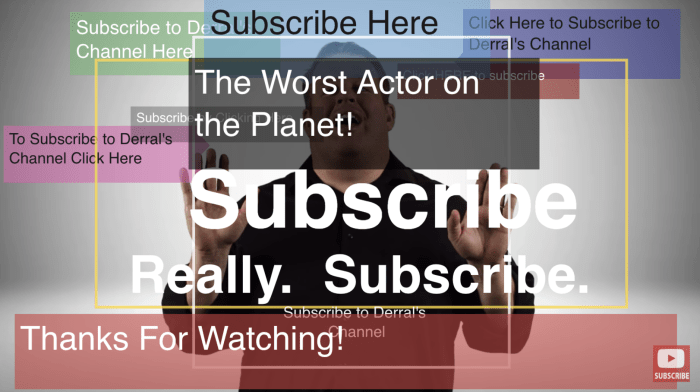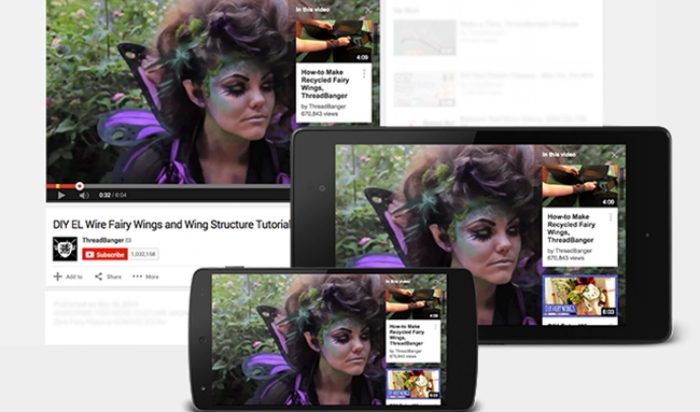The Shift from Annotations to Cards
YouTube annotations, introduced in 2008, were a revolutionary feature that allowed creators to add interactive elements directly to their videos. These elements, ranging from simple text notes to clickable links and surveys, provided a way to engage viewers and enhance the viewing experience. They were initially a popular tool for creators to guide viewers through their content, provide additional information, and promote other videos or channels.
However, over time, annotations became increasingly problematic. They were often misused for spam, creating a cluttered and distracting viewing experience. Additionally, their lack of mobile compatibility made them inaccessible to a growing segment of the YouTube audience. Recognizing these issues, YouTube announced in 2017 that it would be phasing out annotations in favor of a more streamlined and mobile-friendly alternative: cards.
Annotations vs. Cards
The transition from annotations to cards represented a significant shift in how creators interact with their viewers. Here’s a comparison of the features and limitations of both:
- Annotations: Annotations were embedded directly into the video player, appearing as text boxes, callouts, or clickable links. They were customizable and offered a wide range of options for interaction, including links to external websites, other videos, and surveys. However, they were often visually distracting, prone to misuse, and lacked mobile compatibility.
- Cards: Cards, on the other hand, are interactive elements that appear as small, non-intrusive overlays at the top right corner of the video player. They are triggered by specific points in the video and offer a more streamlined approach to providing additional information, promoting other content, or engaging viewers with surveys. Cards are also fully mobile-compatible, ensuring that viewers on any device can access their functionality.
“Cards are designed to be a more modern and streamlined way for creators to engage their viewers. They are less intrusive than annotations and offer a more consistent experience across all devices.” – YouTube Support
Cards: A New Era of Interactive Content: Youtube Is Replacing Annotations With Cards
Say goodbye to the days of static videos! YouTube cards have revolutionized the way creators engage with their audience, offering a dynamic and interactive experience. These clickable elements, appearing as small icons in the top-right corner of your video, allow viewers to explore additional content, connect with you, and even purchase merchandise.
Key Features and Functionalities of YouTube Cards
YouTube cards offer a variety of functionalities, empowering creators to enhance their content and connect with viewers in innovative ways.
- Links: Direct viewers to other videos, playlists, channels, or external websites. This allows creators to expand on specific topics, recommend related content, or drive traffic to their website or social media profiles.
- Polls: Engage viewers by asking questions and allowing them to vote on multiple-choice options. This fosters interaction and helps creators gather audience insights.
- Merchandise: Showcase and promote merchandise directly within the video, enabling viewers to purchase items without leaving the platform. This streamlines the purchasing process and increases revenue opportunities for creators.
- Donation cards: Provide viewers with a convenient way to support creators financially through platforms like Patreon or PayPal. This allows fans to directly contribute to their favorite channels.
- End Screens: Display a customized end screen with calls to action, promoting specific videos, playlists, or channels. This increases engagement and helps creators direct viewers to their desired content.
Examples of Different Card Types and Their Applications, Youtube is replacing annotations with cards
Let’s delve into some real-world examples of how creators utilize different card types to enhance their content:
- Gaming Channels: Gamers often use link cards to direct viewers to their Twitch channel or other gaming platforms, expanding their reach and community.
- Educational Channels: Educators can leverage cards to provide supplementary materials, such as downloadable resources, links to relevant articles, or quizzes to test viewers’ understanding.
- Music Channels: Musicians can use merchandise cards to promote their albums, concert tickets, or other related products, directly engaging fans and generating revenue.
- Beauty and Fashion Channels: These channels frequently utilize cards to showcase product recommendations, link to specific brands or websites, or conduct polls to gauge viewers’ preferences.
Benefits of Using Cards for Creators and Viewers
The implementation of cards offers a multitude of advantages for both creators and viewers:
- Enhanced Engagement: Cards encourage viewer interaction, fostering a more dynamic and engaging viewing experience. This leads to increased watch time, audience retention, and channel growth.
- Improved User Experience: Cards provide a seamless and convenient way for viewers to access additional information, explore related content, or take action without leaving the video platform.
- Increased Revenue Opportunities: By offering merchandise cards, donation cards, and promoting their content effectively, creators can generate additional revenue streams and monetize their efforts.
- Streamlined Content Promotion: Cards enable creators to seamlessly promote their other videos, playlists, or channels, driving traffic to their desired content and expanding their reach.
Impact on Content Creation
The shift from annotations to cards has a profound impact on video production workflows and strategies, forcing creators to adapt their content to leverage the new interactive possibilities. This transition necessitates a rethinking of how creators structure their videos and engage viewers, leading to a more dynamic and interactive experience.
Content Structure and Organization
Cards offer a structured approach to presenting information, allowing creators to organize content more effectively. This change encourages a shift towards a more modular approach to video production, where individual segments can be easily linked to relevant resources, further information, or even calls to action. This modularity makes it easier to update videos with fresh content or adjust the flow based on viewer feedback.
Engaging Viewers with Cards
Cards empower creators to directly engage with viewers during the video experience. By providing interactive elements like links to websites, merchandise, social media profiles, or even other videos, creators can encourage deeper engagement and build a stronger connection with their audience.
Innovative Card Implementations
Here are examples of how creators can leverage cards to enhance viewer engagement:
- Product Demonstrations: When showcasing a product, creators can use cards to link to purchase pages, product reviews, or additional information about the product’s features. This allows viewers to easily access relevant details and make informed decisions.
- Educational Content: Educators can utilize cards to provide supplementary materials like articles, quizzes, or interactive exercises. This allows viewers to delve deeper into the subject matter and test their understanding.
- Behind-the-Scenes Content: Creators can use cards to offer exclusive behind-the-scenes footage, interviews, or insights into their creative process. This allows viewers to connect with the creator on a more personal level and gain a deeper understanding of their work.
- Community Building: Cards can be used to foster a sense of community by linking to social media groups, forums, or online communities related to the video’s topic. This encourages viewers to interact with each other and build connections around shared interests.
Workflow Optimization
The shift to cards requires creators to adjust their workflow. It is essential to plan the placement and content of cards during the editing process. This includes considering the flow of the video, the timing of card appearances, and the overall impact of the interactive elements on the viewer experience.
The key is to ensure that cards enhance the video’s narrative and provide a seamless experience for the viewer.
The Future of Interactive Video
Interactive video is no longer a futuristic concept; it’s rapidly becoming the norm, transforming how we consume and engage with online content. YouTube, the video-sharing giant, has been at the forefront of this evolution, constantly pushing the boundaries of interactive experiences. But what lies ahead for this dynamic field?
Emerging Trends in Interactive Video Experiences
The landscape of interactive video is constantly evolving, with new trends emerging regularly. These trends are shaping the future of how we interact with video content.
- Interactive Storytelling: Imagine watching a movie where you can choose the next plot twist or influence the character’s decisions. This is the power of interactive storytelling, which allows viewers to actively participate in the narrative. Platforms like YouTube are experimenting with interactive features like branching storylines and interactive polls, giving viewers more control over the content they consume.
- Gamified Video Experiences: Video games are increasingly integrating interactive elements, blurring the lines between traditional gaming and video content. Imagine a cooking tutorial that turns into a mini-game where you need to complete certain tasks to learn the recipe. YouTube is exploring ways to incorporate gamification into its platform, offering viewers a more engaging and interactive way to learn and be entertained.
- Personalized Video Content: The future of interactive video lies in personalization. Imagine a world where video content adapts to your individual preferences, tailoring itself to your interests and learning style. This is becoming a reality with the rise of AI-powered video platforms. YouTube is exploring algorithms that can personalize video recommendations and even modify the content based on your past interactions.
Potential Future Developments in Cards
Cards, the interactive elements that enhance YouTube videos, are constantly being refined and expanded. These developments will further enhance the interactive experience for viewers.
- Advanced Card Functionality: The future of cards holds exciting possibilities. Imagine cards that can trigger specific actions, like playing a mini-game or accessing a hidden playlist. Cards could also be used to personalize the video experience, dynamically changing the content based on your preferences.
- Dynamic Card Placement: Current card placement is static, appearing at predetermined times. However, imagine cards that appear dynamically based on viewer interaction, such as a card that appears when a viewer clicks on a specific object in the video. This dynamic placement could create a more immersive and interactive experience.
- Interactive Card Design: Card design is currently limited to text, images, and links. In the future, cards could become more interactive, incorporating elements like 3D models, virtual reality experiences, and even interactive quizzes. This could lead to a more engaging and immersive experience for viewers.
Impact on Content Creation
The evolution of interactive elements will undoubtedly reshape the future of online video content.
- Increased Content Complexity: Creators will need to develop more complex and interactive content to keep viewers engaged. This could involve incorporating branching storylines, interactive quizzes, and even augmented reality experiences.
- Greater Emphasis on User Engagement: Content creators will need to focus on building strong connections with their audience. This means creating content that is not only informative but also interactive, allowing viewers to participate and contribute to the experience.
- New Content Formats: The emergence of interactive video will likely lead to new content formats. Imagine videos that are part tutorial, part game, part interactive story. Creators will need to be innovative and experiment with new ways to engage their audience.
Youtube is replacing annotations with cards – As YouTube continues to evolve, the shift from annotations to cards signifies a commitment to creating a more engaging and interactive platform for creators and viewers alike. The future of video content is interactive, and cards are paving the way for a new era of dynamic and engaging experiences. So, buckle up, creators! Embrace the power of cards and unlock a whole new world of possibilities to connect with your audience in meaningful ways.
YouTube’s switch from annotations to cards might be a bit of a bummer for some, but hey, at least we’ve got good news on the mobile front! T-Mobile is extending its free international data offer through 2017, t mobile extends free international data offer through 2017 , so you can binge-watch those YouTube videos anywhere in the world without worrying about data charges.
So, while we’re adjusting to the new card system, at least we can explore the world with our favorite YouTube channels in tow.
 Standi Techno News
Standi Techno News

